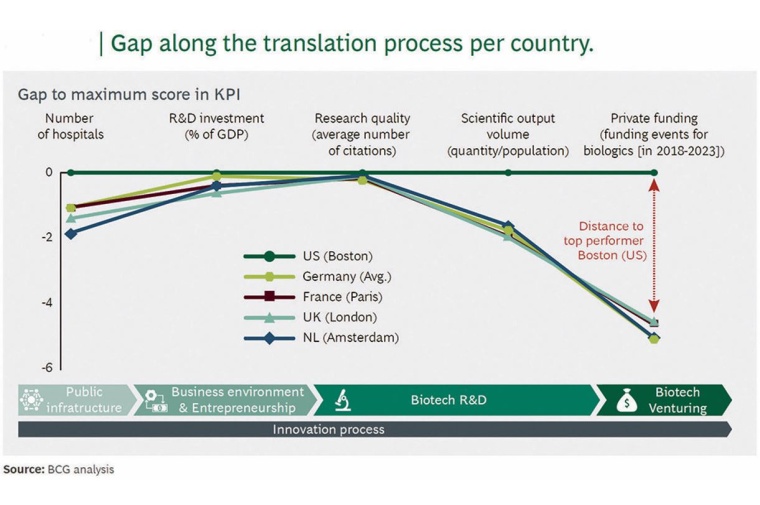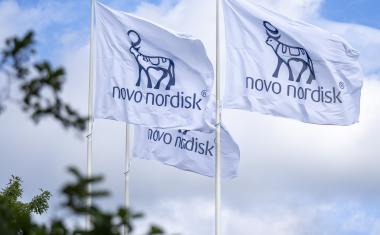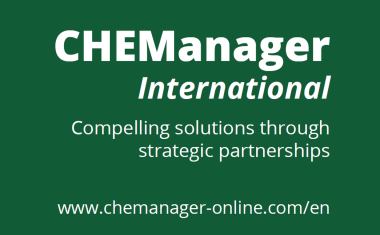Europe’s Biotech Cluster Powerhouses
Cambridge, Leiden, Heidelberg or Paris - many European countries have biotechnology clusters in which scientific expertise meets a well-developed infrastructure, committed entrepreneurship and attractive financing opportunities. A subjective look at the best.
Whether Cambridge, Leiden, Heidelberg or Paris — many European countries have biotechnology clusters in which scientific expertise meets a well-developed infrastructure, committed entrepreneurship and attractive financing opportunities. The drugs of tomorrow often emerge from such knowledge conglomerates. But what characterizes the outstanding biotech hubs on the European continent? A subjective look at the best.

The discussion on the online platform Reddit is symptomatic for the structure of the biotech industry. A user from the USA asks which are the most important biotech hubs in Europe. The feedback overwhelms him: “Seems like the Europeans are giving a ton of different answers. Would you guys say the biotech industry is just distributed more evenly across the continent compared to the US? It seems very different compared to here.” In fact, while Europe has numerous biotech hubs, only one or at most two centers stand out in the USA: Boston/Cambridge and the San Francisco Bay Area.
“There are many biotech conglomerates in Europe, but some stand out due to their high concentration of knowledge, innovative activity and financing.”
Network, Funding, Patents, Jobs
But what characterizes a successful, strong cluster? US Commercial real estate investor Brad Thomas says: “There is a unique desire among life science entities to cluster together in campus ecosystems in order to drive productivity and collaboration, to recruit and retain top talent, to attract strategic capital, and to ensure best-in-class, 24/7 operations of their mission-critical real estate.”
Ralf Huss, Managing Director of the Bavarian BioM Biotech Cluster Development company, goes into more detail: “The outstanding thing (...) is a network based on excellent science and also partly applied research (at least in selected key areas), efficient technology transfer in translation centers with the possibilities of accelerated incubation, a sustainable industrial environment consisting of start-ups, successful SMEs and, if possible, globally active pharmaceutical and biotech companies. In addition, there is a supportive policy at local, regional and national level with a close relationship to European decision-makers. Such a cluster is a strong partner for global and strategic investors, which is an important driver for further growth.”
The differences between a strong cluster and a less good one depend above all on the criteria used as a basis. According to the US trade journal “Gen — Genetic Engineering and Biotechnology News”, this definitely includes funding from state healthcare systems and venture capital (VC) investors, patents, lab space and the number of jobs.
“There is a unique desire among life science entities to cluster together in campus ecosystems in order to drive productivity and collaboration, to recruit and retain top talent, to attract strategic capital."
- Brad Thomas, US Commercial real estate investor
For its part, the Boston Consulting Group (BCG), together with the Institute for Deep Tech Innovation (DEEP) and the Berlin educational institution ESMT, designed a so-called Biotech Innovation Hub Index (BIHI, see interview) to help evaluate and compare the effectiveness of biotech innovation hubs. A key finding of the study entitled “Biotech Innovation Hubs in Germany — Divided and Conquered?” is that while European hubs excel in terms of the quality of academic research, they otherwise lag behind those in the USA. A key issue here is the lack of transferability of academic research into successful biotech companies in the German biotech sector. This shortfall can be attributed to several factors, with fragmentation playing a significant role. In addition, German biotech centers in particular lack effective collaboration.
However, BioM Managing Director Huss considers this view to be “somewhat one-dimensional”. If you apply classic KPIs for biotechnology companies, such as the number of new drugs or candidates in clinical trials, the financial volume of takeovers or even IPOs, this impression undoubtedly arises. However, the German clusters, and in particular Heidelberg, Berlin and Munich, are “certainly the most innovative centers, even in comparison with the USA”. This is demonstrated not only by the number of “German” Nobel Prizes in this field, but also by the trend towards deeptech and techbio companies in the national clusters.
Huss also points to the increasing interest of strategic partners in gaining access to innovations in Europe and Germany. More and more large global pharmaceutical and technology companies are establishing their research locations in Europe and Germany with long-term investments. In his opinion, it is only a matter of time before financial investors also follow this trend and “recognize the sustainable value creation of modern biotechnology in Germany and Europe.”
European Biotech Clusters in Concrete Terms
Let us take a look at some important European biotech clusters and their characteristics. A selection that is inevitably also subjective:
Oxford/Cambridge/London
The region of London, Oxford, Cambridge and England’s greater southeast is also known as the ‘Golden Triangle’. It is made up of the most life science companies in one place and has been named as one of the top 25 clusters in the world. Back in 2019, the magazine “Management Today” asked: “Can Cambridge become the world’s leading biotech cluster?”
The cluster is a network of renowned research centers, healthcare providers and medical charities in a compact region that claims to be home to four of the world’s top ten universities for healthcare. Furthermore, it has five out of seven of the UK’s academic health science centers and is home to leading medical research institutes including the Wellcome Trust, the Medical Research Council, Cancer Research UK, and the national Cell Therapy Catapult, focusing on stem cell research and industrialization.
As part of the Golden Triangle, Cambridge alone is described as Europe’s largest biotechnology cluster, consisting of more than 30 science and technology parks within ten miles of the city. According to the marketing firm Cambridge& the region attracted over £700 million in private investment in 2020 and counted 440 life sciences companies based in or around the city last year. Between them, they employed 14,000 people and generated £4.2 billion in revenue, an increase of 56% over the previous two years.
The venture investor Cambridge Innovation Capital points out, that the demand for Golden Triangle lab space surges with highest annual volume since 2015. Incidentally, the German biotech company BioNTech has leased around 79,000 sq ft at the Cambridge Biomedical Campus.
“„While European hubs excel in terms of the quality of academic research, they otherwise lag behind those in the USA.”
Stockholm
“Stockholm-Uppsala life science sector has a reputation of being not only Scandinavia’s leading cluster, but also one of the world’s most productive hubs for health care advancement and life science know-how. On average, 15 to 20 new life science companies were formed in the region each year during the last decade. The cluster organization Stockholm Science City (SSCI) points out that Stockholm was ranked number 1 by the EU Commission’s “Regional Innovation Scoreboard,” 2022, with life sciences as an important industry there.
Here are 50% of all life sciences employees in Sweden, around 1,000 life sciences companies where all sectors in the industry are represented. In addition, there are five universities with significant life science activities, three university hospitals, and essential authorities such as the Medical Products Agency and the Public Health Agency.
An example where the focus is on life science besides real estate and urban development is Hagastaden. As of SSCI, one of the neighborhoods main attractions is “proximity, proximity, proximity.” In Hagastaden is the Karolinska Institutet, Karolinska University Hospital, St Erik’s Eye Hospital, and within walking distance of KTH and Stockholm University. Close ties between government, industry, and academia shall facilitate the development of ideas into commercially viable products. On top there is the basic principle in Sweden that the individual researcher owns the result of his or her research — which can be a considerable motivation.
Leiden/Amsterdam
The Leiden Bio Science Park (LBSP) was established in 1984 in the Leeuwenhoek area and comprises 411 companies. LBSP claims to have taken a strong, global position and evolved into the Netherlands’ largest life sciences / health cluster, connecting talent, researchers and entrepreneurs. The district and its community include more than 21,000 innovators and 22.500 students.
Leiden, on the other hand, is part of the Amsterdam biotech region, around 36 kilometers away. The Amsterdam Life Sciences District in the southeast of the city comprises multiple start-ups, global medical companies, and universities. The cluster organization underlines Amsterdam´s global leading role in cancer research and artificial intelligence (AI), as well as its extensive base of clinical research. The city is home to two academic hospitals, united under the umbrella of Amsterdam UMC, plus the Netherlands Cancer Institute (NKI), Sanquin and the Academic Centre for Dentistry (ACTA). Furthermore, several industry players have relocated to Amsterdam after the European Medicines Agency (EMA) moved here from London in 2019.
Paris
Paris concentrates most of the French biotech industry. Some call it even Europe’s biggest bio cluster. Medicen, the local cluster organization, says, it has around 500 members — 350 small and mid-sized enterprises, structured in the main areas of biotech, medtech and e-health. In total the cluster organization counts 150 biotech companies.
As of Labiotech, Paris was clearly lagging behind compared to the UK until the end of the 20th century. In the meantimemeantime, the city not only caught up but outpaced the UK in many aspects. The biotech platform took its own approach to site evaluation by setting the selection criteria of €1 million raised capital respectively revenues and the grade of proprietary technology. Accordingly, Paris is leading the way in Europe with 47 biotech companies matching these criteria.
The news site also has an explanation why only few people know about Paris´s position as the biggest bio cluster of Europe. One of the reasons is the performance of the politics respectively the cluster management. Labiotech: “Medicen, the cluster of the region, has been recognized as one of the worst in France.”
Basel
The Swiss city of Basel is not only home to well-known pharmaceutical companies such as Roche and Novartis, but also hosts numerous biotech companies. According to the local life sciences marketing company, the location has around 800 companies and 28,000 employees and covers the entire value chain from research and development to production and marketing.
Labiotech.eu had already included Basel in its list of European biotech hubs with the most interesting companies in 2018. The region has developed into a “hotspot for pharma and biotech.” For example, the biopharmaceutical company Actelion, which was acquired by the US group Johnson & Johnson for almost $30 billion, is “one of the largest companies in European biotech history.”
The proximity of Big Pharma, the presence of flagship companies and a large number of small and medium-sized biotech companies such as Basilea, Allecra, Santhera Pharmaceuticals and Polyphor make the region an incubator for success stories. The proximity to prominent life sciences research at the universities and research institutes as well as the proximity to clinical research at the university hospitals in Basel are also considered essential for innovation.

Berlin
The Berlin-Brandenburg region also counts itself among the leading locations when it comes to health and innovation. The region is particularly strong in its concentration and networking of science, clinics and industry. According to the cluster management, more than 670 companies from the biotechnology, pharmaceutical and medical technology sectors benefit from the scientific environment, the clinical research landscape and the proximity to decision-makers from politics and the healthcare sector. The biotech sector alone accounts for 281 companies with almost 7,200 employees
The consulting firm BCG says: “More specifically, Berlin stands out for its strength in the category business environment and entrepreneurship (…) driven by the considerably higher number of companies funded by angel investors.”
"The German clusters, and in particular Heidelberg, Berlin and Munich, are certainly the most innovative centers, even in comparison with the USA".
- Ralf Huss, Managing Director of BioM Biotech Cluster Development
Heidelberg
BioRN describes itself as the innovation cluster of the Rhine-Main-Neckar region around Heidelberg, “one of Germany’s strongest biotech hubs”. The non-profit network counts more than 140 members, including universities, research institutions and technology parks. Ten global pharmaceutical companies have R&D sites or are active in the BioRN network. The ecosystem is completed by a range of small and medium-sized enterprises as well as local government organizations and interest groups.
BCG points out that “Heidelberg is renowned for its strong scientific output and prestigeprestige, but has only a small lead compared to Munich and Berlin in terms of scientific output quantity and quality. The city’s reputation and achievements in scientific research contribute significantly to its standing in the biotech community, although this rarely translates into commercial success.”

Munich
According to its Managing Director Ralf Huss, the Bavarian biotech cluster BioM in Munich-Martinsried has been a national and European leader since it was founded more than 25 years ago. The starting point was and is a supportive policy with the provision of financial resources and an infrastructure with numerous innovation and start-up centers. The innovations and start-up ideas mainly come from the two universities of excellence, the Technical University (TUM) and the Ludwig-Maximilians University (LMU). In recent years, there has not only been a growth in biopharmaceutical companies, but also an increasing number of technology companies settling here.
The state’s current biotech report lists 527 companies with 58,000 employees throughout Bavaria. In addition to Munich, Regensburg and Nuremberg-Erlangen are also important locations in Bavaria. In the opinion of BCG “Munich emerges as a leader in biotech venturing within Germany. The city’s ecosystem is particularly favorable to the growth and development of biotech start-ups. This is remarkable because the overall start-up activity is clearly behind Berlin.”

Germany Not in the Top League
However, the positive characteristics of the German locations cannot hide the fact that they do not play in the top league in international comparison. Looking at all three German locations, BCG states: “Collectively, these findings suggest that the Berlin, Heidelberg, and Munich hubs exhibit strong complementarity. However, Germany does not capitalize on these synergistic potentials. Indeed, the combined BIHI of these three hubs is 30% lower than Paris’s score and 45% lower than London’s.”
The consulting firm concludes: “The results of this study call for a wake-up call, particularly for Europe, and more specifically for Germany. The findings are stark: Europe’s performance in biotech innovation is suboptimal, with Germany displaying particularly concerning outcomes. This requires a reevaluation and reinvention of Germany’s approach to collaboration and innovation in the biotech sector.”
Thorsten Schüller, CHEManager
















